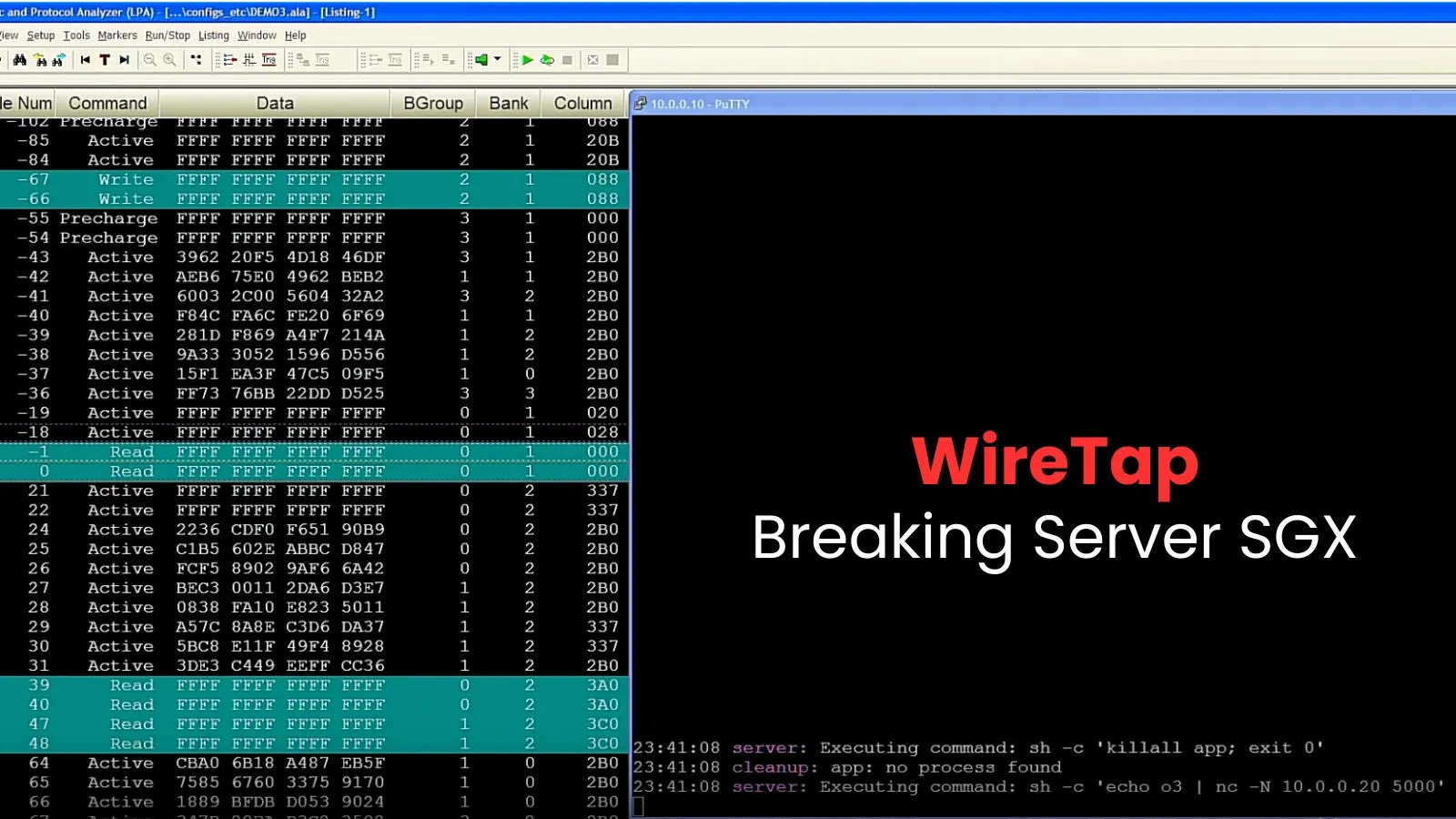
New WireTap Attack Break Server SGX To Exfiltrate Sensitive Data
Unveiling WireTap: A New Threat to Server SGX Enclaves
Intel’s Software Guard Extensions (SGX) technology is a cornerstone of confidential computing, designed to protect sensitive data and cryptographic keys even when the host system is compromised. However, a newly disclosed vulnerability, dubbed the WireTap attack, threatens this bedrock of server security. This innovative physical attack allows malicious actors to bypass SGX protections on modern server processors, potentially exfiltrating critical information with a surprisingly low-cost setup.
Understanding the WireTap Attack and Its Impact on SGX
The WireTap attack represents a significant challenge to the integrity of SGX enclaves. Researchers detailed in an October 2025 paper how this method facilitates the extraction of cryptographic keys from supposedly secure SGX environments. The core of the attack lies in physical access, enabling attackers to exploit the underlying hardware mechanisms in unexpected ways.
Intel SGX aims to create protected regions of memory, known as enclaves, where sensitive computations can occur in isolation from the rest of the system, including privileged software like the operating system or hypervisor. The WireTap attack circumvents these protections by sidestepping the software layer entirely, targeting the physical hardware to gain access to the data residing within these enclaves. This means that even perfectly patched software might not fully mitigate the risk if an attacker has physical control over the server.
Technical Breakdown: How WireTap Compromises SGX Enclaves
While the full technical details are currently under embargo or restricted to the research paper, the public disclosure highlights that the WireTap attack leverages a low-cost setup. This implies that the barrier to entry for performing such an attack could be relatively low, increasing its potential impact. The attack’s ability to extract cryptographic keys is particularly alarming, as these keys are fundamental to data encryption, authentication, and secure communication protocols. Compromised cryptographic keys could lead to:
- Decryption of sensitive data protected by the SGX enclave.
- Impersonation of legitimate services or users.
- Further escalation of privileges within a compromised system.
Organizations relying on SGX for sensitive data processing, intellectual property protection, or blockchain applications must pay close attention to this emerging threat.
Remediation Actions and Mitigations Against WireTap
Addressing the WireTap attack requires a multi-layered approach, given its physical nature. While software patches for this specific hardware vulnerability may be limited, several proactive measures can significantly reduce the risk:
- Physical Security Enhancements: The most immediate defense against an attack requiring physical access is robust physical security. This includes restricted access to server rooms, surveillance, access logging, and tamper-evident seals on server chassis.
- Hardware-Level Monitoring: Implement solutions that monitor for unauthorized physical access or modifications to server hardware.
- Supply Chain Security: Vet hardware suppliers meticulously to ensure the integrity of your server components from manufacturing to deployment.
- Data Minimization within Enclaves: Only store and process strictly necessary sensitive data within SGX enclaves. Reduce the attack surface by minimizing the duration sensitive data resides in the enclave.
- Principle of Least Privilege: Even within enclaves, apply the principle of least privilege. Limit the access and capabilities of enclave code to only what is absolutely required.
- Key Management Best Practices: Revisit and strengthen cryptographic key management policies. Regularly rotate keys and ensure secure key exchange and storage outside of the immediate enclave context when not actively in use.
- Software Integrity Checks: While not directly mitigating the physical attack, ongoing software integrity checks and attestation processes for SGX enclaves can help detect if an enclave has been tampered with or is running an unauthorized version after a physical compromise.
Currently, no specific CVE has been publicly assigned to the WireTap attack. Organizations should monitor official Intel security advisories and security research outlets for updates regarding this vulnerability. Once available, information will be linked to resources such as the CVE database.
Conclusion
The WireTap attack illustrates that even the most robust security paradigms, such as Intel SGX, can be challenged by sophisticated physical attacks. For IT professionals and security analysts, understanding the implications of this vulnerability is paramount. Prioritizing physical security, strengthening key management practices, and minimizing the attack surface within SGX enclaves are critical steps to protect sensitive data against this new and innovative threat. Vigilance and proactive security measures remain the best defense in an evolving threat landscape.





